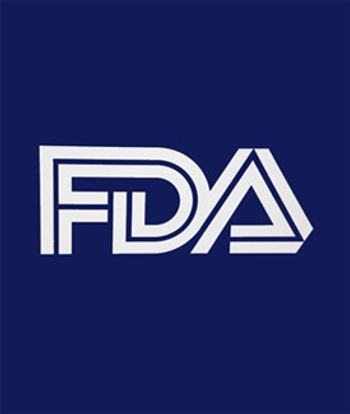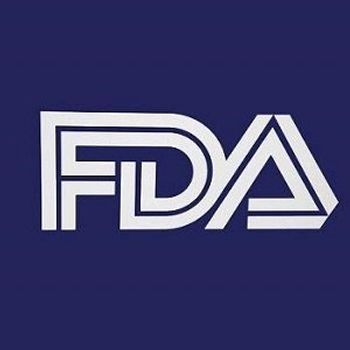
The newly added cohort allows for greater opportunity to treat patients earlier, with the hope of impacting disease course and preserving muscle.

Marco Meglio, Assistant Managing Editor for NeurologyLive, has been with the team since October 2019. Follow him on Twitter @marcomeglio1 or email him at [email protected]

The newly added cohort allows for greater opportunity to treat patients earlier, with the hope of impacting disease course and preserving muscle.

Suvecaltamide did not meet the primary endpoint in the phase 2b trial but showed numeric improvements and was well-tolerated.

Vitrisiran demonstrated a statistically significant reduction in the composite of all-cause mortality and recurrent cardiovascular events in both the overall population and those who received a monotherapy of vutrisiran without tafamidis.

Test your neurology knowledge with NeurologyLive®'s weekly quiz series, featuring questions on a variety of clinical and historical neurology topics. This week's topic is on epilepsy/Dravet syndrome.

After following patients for more than 10 years, arrhythmias were considered the most important cardiac predictor of survival, with progressive neurologic disability and diabetes mellitus identified as further major contributors.

Overall, the treatment resulted in dose-dependent trends of improvement on key clinical measures including Total Functional Capacity and Composite Unified Hungtinton's Disease Rating Scale.

Mind Moments®, a podcast from NeurologyLive®, brings you an exclusive interview with Anne Marie Morse, DO, FAAN. [LISTEN TIME: 18 minutes]

Clinically meaningful reductions in seizures through fenfluramine is likely to contribute to nonseizure benefits such as improvement in comorbidities, decreased use of other antiseizure medications, and reduction in premature death.

Istradefylline led to significant reductions in tremor and motor symptoms in patients with Parkinson disease over 24 weeks.

Bezisterim has shown potential in improving non-motor symptoms like fatigue and sleep issues, with promising results from previous studies.

Modified Functional Status Questionnaire, an assessment of activities of daily living, includes several different notable domains, including quality of interaction, social activity, and psychological function.

Although the data used predated 2019, istradefylline was associated with a statistically significant lower odds of the overall incidence of treatment-emergent adverse events than other adjunctive therapies for Parkinson disease.

In a large-scale analysis. 70% of patients with essential tremor and 70% of undiagnosed patients reported dissatisfaction with the therapeutic options available to treat their condition.

Test your neurology knowledge with NeurologyLive®'s weekly quiz series, featuring questions on a variety of clinical and historical neurology topics. This week's topic is on Alzheimer disease/dementia.

Patients treated with at least 12.5 mg/day of oral prednisone for at least 3 months had an 88% reduction in the risk of relapse compared with those who did not receive this regimen.

The therapy is the first and only neonatal Fc receptor blocker approved for the treatment of CIDP, and will be available as a once-weekly, 30- to 90-second subcutaneous injection.

Eric Herzog, PhD, a chronobiologist and professor of biology and neuroscience at Washington University, provided thoughts on a number of topics related to sleep during pregnancy and the significance of maintaining circadian rhythms.

A statistically significant dose-response correlation was observed, indicating that greater lifestyle changes led to better cognitive and functional outcomes in Alzheimer's patients.

CNM-Au8, an oral suspension of clean-surfaced, catalytically-active gold nanocrystals, resulted in prolonged survival and reductions in neurofilament light, a prominent biomarker of neuroaxonal damage.

ND0612, an investigational agent, had supportive data from the pivotal phase 3 BouNDless trial, a large-scale, phase 3 study of patients with Parkinson disease.

The director at the Foundation for the National Institutes of Health provided commentary on a recently launched partnership aimed at building a repository of ALS data to advance drug development for the disease.

Initial data from a few pediatric and adult patients with Rett syndrome showed that treatment with TSHA-102 resulted in numerous positive enhancements across multiple efficacy measures and clinical domains.

Patients with Parkinson disease and depression exhibit significantly worse nonmotor symptoms, highlighting the need for comprehensive management including orthostatic hypotension, constipation, and hyposexuality.

Douglas A. Wadja, PhD, an assistant professor of neurology at Cleveland State University, detailed a study assessing an electrical nerve stimulation approach to alleviate gait dysfunction in patients with MS.

Across both the primary and secondary end points, treatment with TAK-861 resulted in significant improvements in symptom severity among patients with narcolepsy type 1.

Test your neurology knowledge with NeurologyLive®'s weekly quiz series, featuring questions on a variety of clinical and historical neurology topics. This week's topic is on narcolepsy.

Ron Grunstein, MD, PhD, head of Sleep and Circadian Research at the Woolcock Institute of Medical Research, provided commentary on early, promising data regarding investigational agent ALKS 2680 in patients with narcolepsy type 1.

Rakesh Jain, PhD, MS, clinical professor of psychiatry at the Texas Tech University School of Medicine, provided insight on a recently approved tablet dosage for deutetrabenazine, an FDA-approved therapy for chorea and tardive dyskinesia associated with Huntington disease.

AOC 1020 (del-brax) from Avidity Biosciences shows over 50% reduction in DUX4 regulated genes, trends of functional improvement, and favorable safety in FSHD patients.

Mind Moments®, a podcast from NeurologyLive®, brings you exclusive interviews with Anthony Feinstein, PhD, FRCPC, MBBCh; Brian G. Weinshenker, MD; Douglas A. Wajda, PhD; Le Hua, MD; and Eoin P. Flanagan, MB, BCh. [LISTEN TIME: 22 minutes]